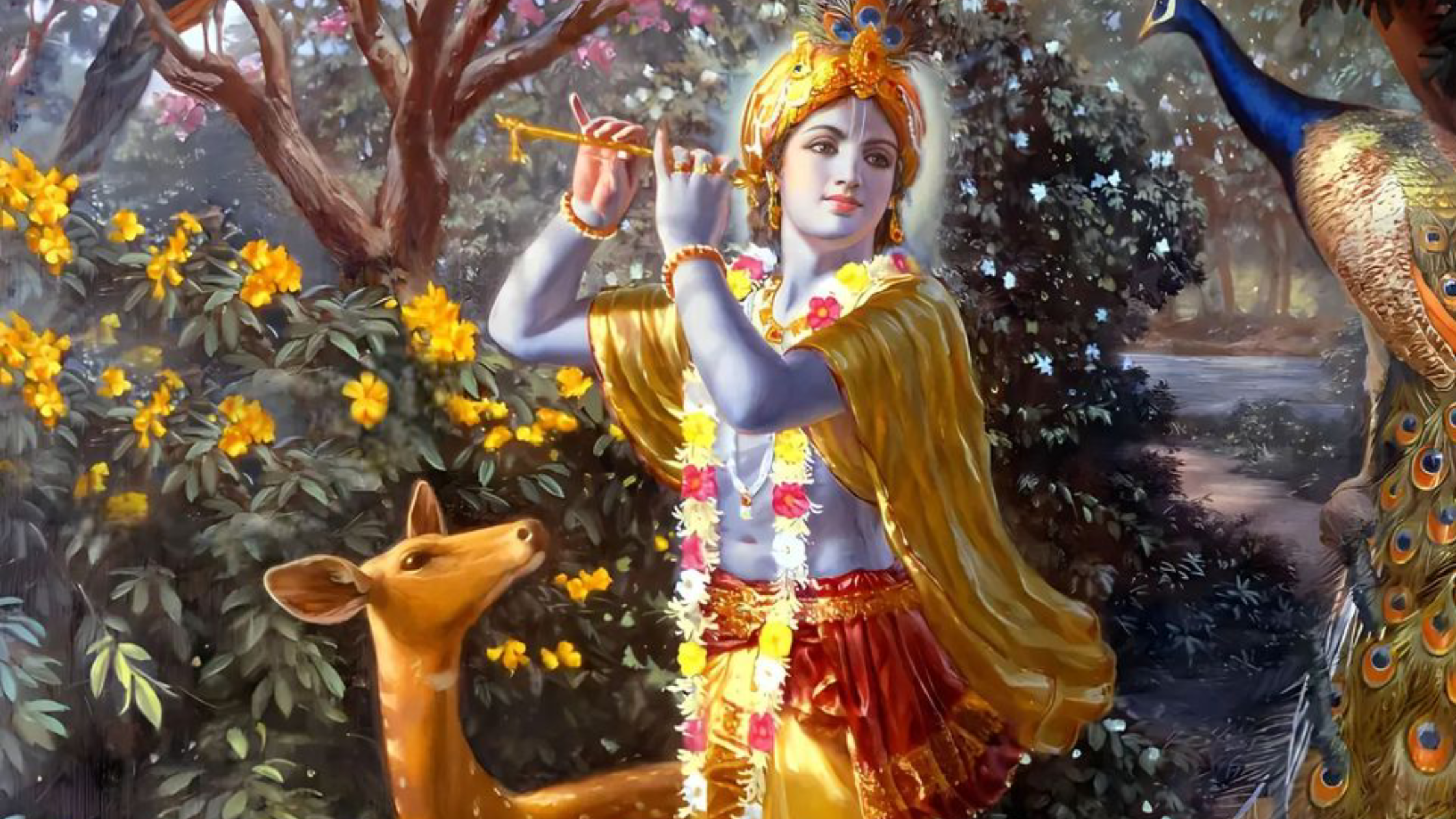The passing of Lord Krishna, one of the most revered deities in Hindu mythology, is a tale rich in both tragedy and transcendence. According to the ancient scriptures, Krishna’s demise unfolded in the serene woodlands near the Hiran River in Prabhas Patan Theertham.
In his final moments of meditation, Krishna, embodying his divine nature, accepted the unfolding of fate with profound grace. It was here that a tragic misunderstanding occurred: a hunter named Jara, mistaking Krishna’s foot for that of a deer, unknowingly inflicted a fatal wound upon the divine being.
Despite the grave consequences, Krishna, in his wisdom, reassured Jara that his actions were not to be lamented, as they were but a part of the cosmic design of karma. With his last breaths, Krishna imparted timeless wisdom, acknowledging the cyclical nature of existence and the interconnectedness of all beings.
As Krishna departed from the mortal realm, the era of Dwapar Yuga came to a close, marking the beginning of Kali Yuga, a significant transition in Hindu cosmology. Amidst the grief of his companions, Arjuna, the valiant warrior and dear friend of Krishna, took charge, ensuring that the proper rites were conducted to honor Krishna’s departure.
Following Krishna’s passing, Arjuna led the grieving community to Prabhasa, where the last rites were performed for Krishna, his brother Balarama, and their companions. In the aftermath of Krishna’s departure, a sense of sorrow and upheaval swept through the land.
Arjuna, recognizing the impending calamity, urged the citizens of Dwaraka to evacuate, foretelling the city’s fate of being engulfed by the sea. With somber determination, Arjuna guided the survivors to safety, navigating through various challenges along the way.
Krishna’s wives, Rukmini and Satyabhama, each faced their own trials in the wake of his passing. Rukmini, overwhelmed by grief, chose to end her life, while Satyabhama sought solace through devout austerity.
What happened to krishna body after death?
Knowing that his end would also spell the end of Dwaraka, Lord Krishna entrusted the protection of the remaining Yadava clan to Arjuna, the valiant third Pandava. It was Arjuna who first discovered the mortal remains of Krishna.
Under Arjuna’s guidance, the Pandavas conducted the cremation rites for Krishna and his elder brother, Balarama. While various texts offer differing interpretations of this event, many recount that although Krishna’s body turned to ashes, his heart continued to burn.
Arjuna, following tradition, immersed the ashes of the two brothers, along with Krishna’s burning heart, into the sacred waters of the Yamuna River. As he departed from Dwarka with the surviving Yadavas, the sea reclaimed the city, signaling the end of Dwapara Yuga and the dawn of Kali Yuga.
Though some texts suggest Krishna’s ashes were scattered across holy sites, this claim lacks substantial evidence. However, a prominent local legend recounts the journey of devotees carrying Krishna’s ‘pinda’ or heart towards the east as Dwarka submerged.
Legend has it that upon reaching Puri, Odisha, these devotees carved idols of Jagannath (Krishna), Balabhadra (Balarama), and Subhadra, founding what is now known as the illustrious Puri Jagannath temple.
Within the revered idol of Jagannath resides the heart of Krishna’s pinda, safeguarded by the temple’s sanctity. To preserve this sacred relic, the idols are ritually replaced every twelve years in a ceremony known as Navakalevara, ensuring the continued reverence for Lord Krishna’s divine presence.
In summary, the passing of Lord Krishna left an indelible mark on Hindu mythology, inspiring generations with his teachings of wisdom, compassion, and acceptance of fate. Though his physical form departed, his spirit lives on, revered by devotees worldwide, and his legacy continues to illuminate the path of spiritual seekers through the ages.
Disclaimer: This blog includes information curated from multiple sources for reading purposes. This is not a medical advice and we do not take any responsibility for any actions you make take based on the uploaded information here.
Psychic Medium Daksh’s Contact Details:
Phone Number: +91-9511119918
Whatsapp Number: +91-9511119918
Official Email: contact@psychicmediumdaksh.com
Address: Psychic Medium Daksh, 414, Guru Harkishan Nagar, Delhi, 110087



